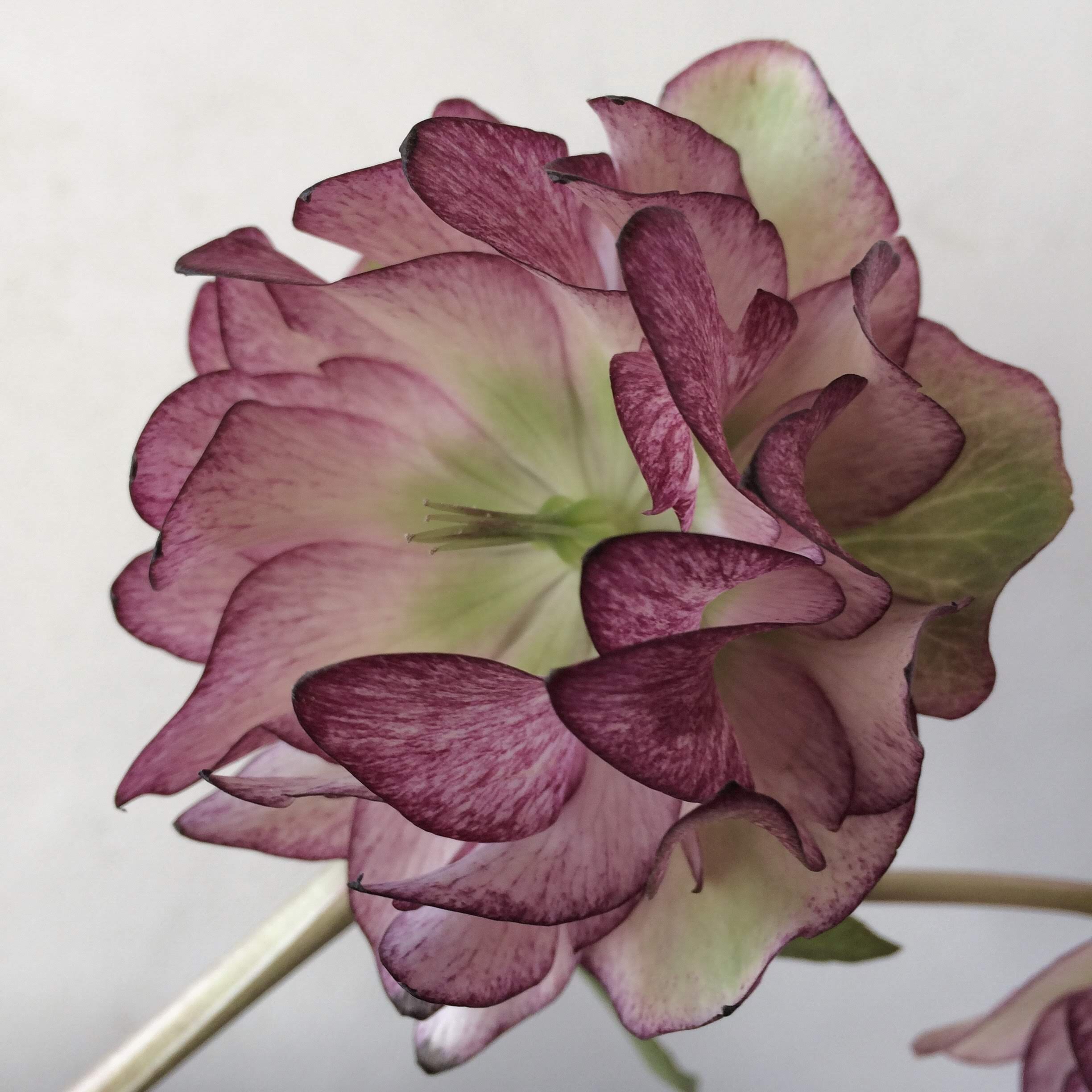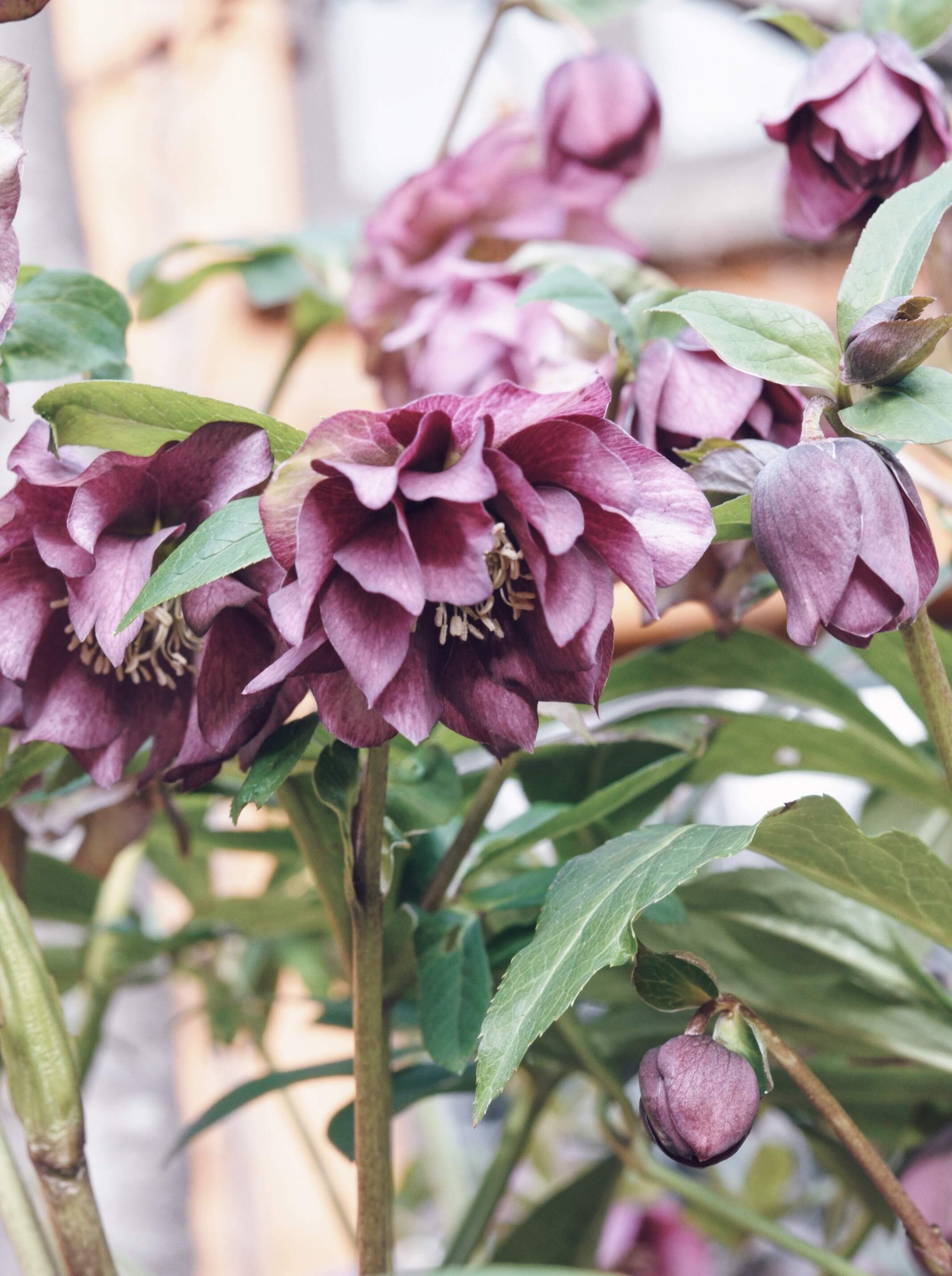Hellebores
It is part of the human condition to complain. It’s called the ‘ain’t it awful?’ game. It’s a way of establishing belonging. Start with complaining about the weather, just to check out the temperature of the water, and then the world is your oyster. Anything from supermarkets to Trump. It’s a way of saying, yeah, I get you, we’re sharing a world view here.
Ever wondered what florists complain to each other about? One of the things is Pinterest. Because Pinterest tells you that some things are possible when, in reality, they really aren’t. One of those things is that you cannot do is to cut a fresh hellebore, put it in a table centre or (gasp) a flower crown, and expect it to last more than twenty minutes. Hellebores are hard to handle.
And every time hellebore season comes round (Jan/Feb) the flower facebook groups fill with wilting woe and appeals for conditioning tips. There are snake oil promises about how to keep them perfect, each more involved that the next. Pins in the stems. Slitting the stem from tip to the neck of the flower. Life is truly too short. Some swear by searing and them overnight in cool water, but I dispute that this is anything close to reliable with hellebores in full flower. This makes sense if you understand that the bit that we think of as the petals of a hellebore are actually the sepals. The petals are within the fluffy central part. Look carefully, and there is a ruffle behind the anthers. This is the actual flower. (More accurately called nectaries, but let’s not get too technical.)
There is a brutal truth here; if you want them complete with their fluffy yellow antlers intact, just dig up the plant and bring it inside. This picture is actually of a plant in a pot, and I planted it out after I took this photo. I know, don’t believe anything you see. If you want cut flowers, you wait for the antlers to fall and the seed pods to start to fall.
There does seem to be one exception to this which is a hellebore called Merlin, and a very similar one called Maestro. This is not luck; these are different varieties of hellebore. The usual ones we see in garden centres and nurseries are H. niger (Christmas rose) or H. orientalis. Merlin and Maestro are H. Ballardiae. Not easy to find and they seem to be sold out at Ashwood nurseries which is the best place to get your hellebores from, but they are worth seeking out if you really do want hellebores on the kitchen table to brighten up this lowest part of the year.
It is genuinely not often I badmouth a fellow horticulturalist, but please do not buy from Hayloft Plants, however tempting their offers. They were incredibly abusive to Monty Don when he took a stand on peat and once you know that about them, you know everything.
Growing tips for hellebores
Most of your success in growing hellebores is going to be in the siting of them. My soil is on the heavy side for them and I certainly lose some every year because of this. If you have any mature trees that keep the ground a bit drier, hellebores will love to be close by (not underneath) and will also benefit from the shade. They do like to be in sun for part of the day, so don’t put them right in the shadow. The heavier the clay, the more sun they need. If you have free draining, sandy soil, they’d like more shade. If you have waterlogged soil, don’t even try. Put them in a pot.
They don’t need much care or feeding. The only maintenance I do is to trim the leaves back as the new flowers come though. This prevents hellebore leaf spot disease being carried through the winter on the leaves and infecting the flowers. November is the best time, but it’s not too late; simply cut off the old leaves at the base.




